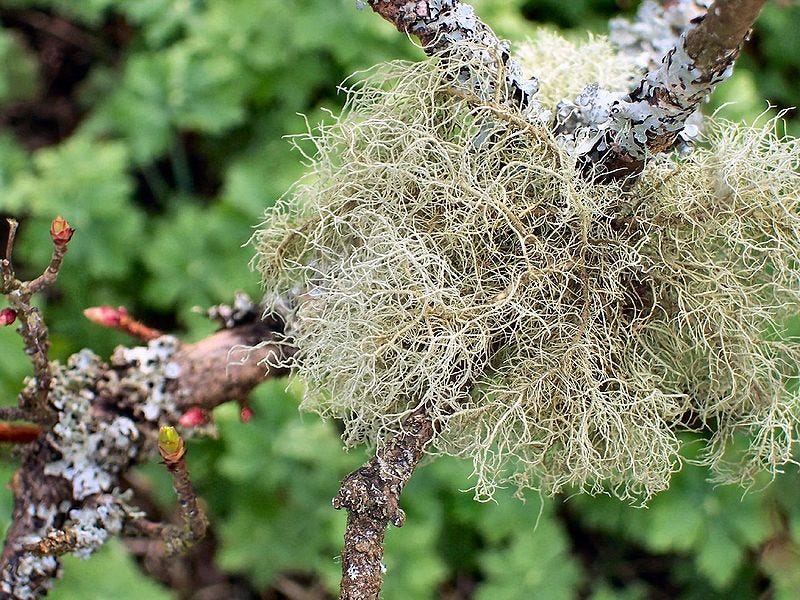Usnea -- A reason to be Likin' Lichens
One of my interests in the natural world has always been what people in earlier times used for treatment of ailments. Home remedies and the like.
One organism that has caught my attention lately is a lichen called usnea. The specific type we have here in Florida has the scientific name Usnea florida. Easy to remember. It’s often referred to as old man’s beard.

Usnea is found in forests worldwide. As mentioned it’s a lichen. Which makes it difficult to say exactly what it is.
Some would argue that lichen isn't really an organism. Not a single one, anyway. A lichen is made up of at 2 separate organisms. It's a relationship between an algae and a fungus. The algae provides the chlorophyll to make food for the lichen, the fungus provides structure and moisture. Living together the fungus and algae create something that is very different from either constituent part.
But things get more complex than that. Sometimes a lichen is a combination of at least 3 organisms. Sometimes it’s 2 different fungi with algae. Sometimes it’s algae, fungus and bacteria. But the cells are fixed in a way that it becomes a single living organism. Complex, but interesting.
But here’s the really cool thing about usnea. It’s been used as an antibiotic for thousands of years. Africans used it. The Chinese used it. Native Americans used it.
Coming to more modern times there has been some interest in usnea as an antibiotic. Here’s a paper from 2020 in Science Direct1.
Their conclusion:
The results show that the use of Usnea sp. in traditional medicine can be scientifically documented. Studies show that usnic acid is the active compound present in Usnea sp. extracts. This compound, which has a high antibacterial and cytotoxic activity, exists in large quantities in low-polarity extracts, and low concentration in these of high-polarity. Usnea sp. extracts contain compounds other than usnic acid as well with biological effects. Usnea barbata is a species that has been employed in modern-day cosmetic and pharmaceutical preparations. The information presented in the review can be considered as a source of knowledge about the Usnea sp. It presents research on biological properties reported for different species of Usnea genus and thus can facilitate their use in medicine.
Another interesting part of the Science Direct paper is the 108 item reading list for more perspective on usnea should you be interested.
As science writer Michael Shermer once said “Humans are pattern-seeking story-telling animals, and we are quite adept at telling stories about patterns, whether they exist or not”2 There are lots of cases where a traditional medicine offers nothing beyond a placebo effect. Other cases see traditional medicines as having an important effect. It’s easy to see patterns with small sample sizes, even when they’re not there. It’s also easy to dismiss traditional medicines as primitive guesses without evidence of value.
My conclusion: A lot of really smart people in the past used various things they found in their local environment to help with health issues. Some worked, some didn’t. Those that tended to be used in multiple cultures over many lifetimes probably had some positive effect. My thought is that usnea was useful in the main area it was most often used — for topical inflammation reduction. There are probably limitations that practitioners didn’t understand but that’s always expected.
So I come out where I usually do for lots of practices. If they’ve remained in use for long periods of time by many people they’re filling a need. So as far as usnea goes I’m likin’ lichens.
https://www.goodreads.com/quotes/43622-humans-are-pattern-seeking-story-telling-animals-and-we-are-quite-adept

